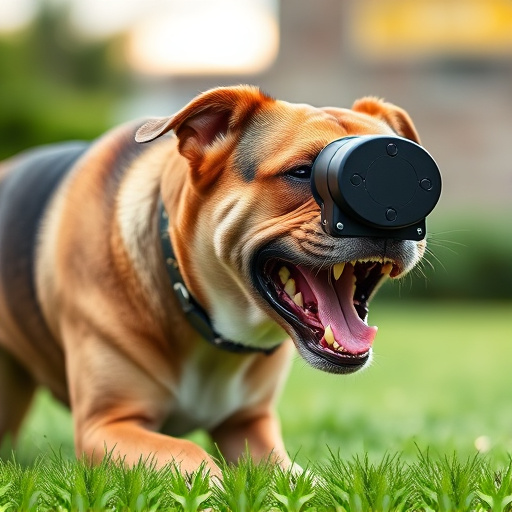Sonic dog training uses Dog Repeller Devices emitting inaudible high-frequency sound waves to modify canine behavior without physical punishment. A crucial aspect for these devices is power consumption, with efficient models offering battery or rechargeable power sources for portability. Buyers should consider battery drain rates, energy-saving modes, and environmental impact when reviewing Dog Repeller Device Power Consumption. Different activation mechanisms like ultrasonic, spray (water/citrus), or motion-activated technologies have varying energy usage patterns, making informed choices key to sustainable pet training solutions.
Exploring innovative ways to train your canine companion? Sonic dog training, using behavioral correction techniques, is a growing trend. This article delves into the world of sonic repellers designed to guide dogs without harm. We’ll dissect the core principles behind this method and analyze the power consumption of these devices. Additionally, we provide an in-depth review and comparison of popular dog repeller models, helping you make an informed choice for effective yet efficient training.
- Understanding Sonic Dog Training and Its Principles
- Dog Repeller Device Power Consumption Analysis
- Review and Comparison of Popular Dog Repeller Devices
Understanding Sonic Dog Training and Its Principles
Sonic dog training, or ultrasonic dog training, is a method that utilizes a specialized device to emit high-frequency sound waves aimed at modifying canine behavior. This innovative approach is designed to correct unwanted actions like barking, jumping, or aggression without resorting to traditional punishment methods. The key principle lies in its non-physical nature, ensuring the well-being and safety of both pets and their owners.
The device, often referred to as a dog repeller, operates by emitting an ultrasonic sound that is inaudible to humans but irritating to dogs. This triggers a natural response to avoid the stimulus, thereby teaching the dog what behavior is unacceptable. A critical aspect to consider is the power consumption of these devices; efficient models can operate on battery or rechargeable power sources, making them portable and convenient for various training settings. Reviews often highlight the importance of choosing a device with optimal power efficiency to ensure both effectiveness and longevity.
Dog Repeller Device Power Consumption Analysis
Dog Repeller Device Power Consumption Review: A Key Factor in Effective Training
When considering a dog repeller device for behavioral correction, one of the critical aspects to evaluate is its power consumption. These devices often rely on batteries, and their longevity directly impacts convenience and cost-effectiveness. A thorough review of the power consumption should include an understanding of how quickly the batteries drain during typical use scenarios. Some advanced models feature energy-saving modes or smart charging systems that can extend battery life, making them more sustainable for long-term use.
The efficiency of a dog repeller device is not just about its performance but also its environmental impact. Lower power consumption means reduced waste and potential cost savings for the user. This review should prompt users to consider not only the immediate effectiveness of the device but also its long-term viability, ensuring it serves as a reliable tool in the sonic dog training process without unduly burdening the environment or requiring frequent battery replacements.
Review and Comparison of Popular Dog Repeller Devices
When considering a dog repeller device, one of the key factors to evaluate is its power consumption. These devices often rely on batteries, and understanding their energy usage patterns can help pet owners make informed decisions. A comprehensive review should look at how each device performs in terms of battery life and overall efficiency. For instance, some models may offer longer durations between charges, making them ideal for outdoor use where access to frequent power sources is limited.
In the market, several popular dog repeller devices stand out. These include ultrasonic, spray, and motion-activated options. Each has its unique advantages and energy consumption profiles. Ultrasonic devices, for example, emit high-frequency sounds that are unpleasant to dogs, consuming relatively low power in the process. Spray repellents, on the other hand, use a fine mist of water or citrus-based solutions, with varying levels of energy usage depending on pump mechanisms. Motion-activated models are also energy-efficient, using sensors to trigger only when necessary, thus minimizing overall power consumption. Comparing these devices based on their power draw can help owners choose a reliable and cost-effective solution for training their pets.
Sonic dog training and behavioral correction devices offer a modern, non-violent approach to managing canine behavior. By understanding their principles and evaluating power consumption, pet owners can make informed choices from the array of available repeller devices. This comprehensive review highlights key features and performance, empowering folks to select the most effective and efficient dog repeller for their needs.
